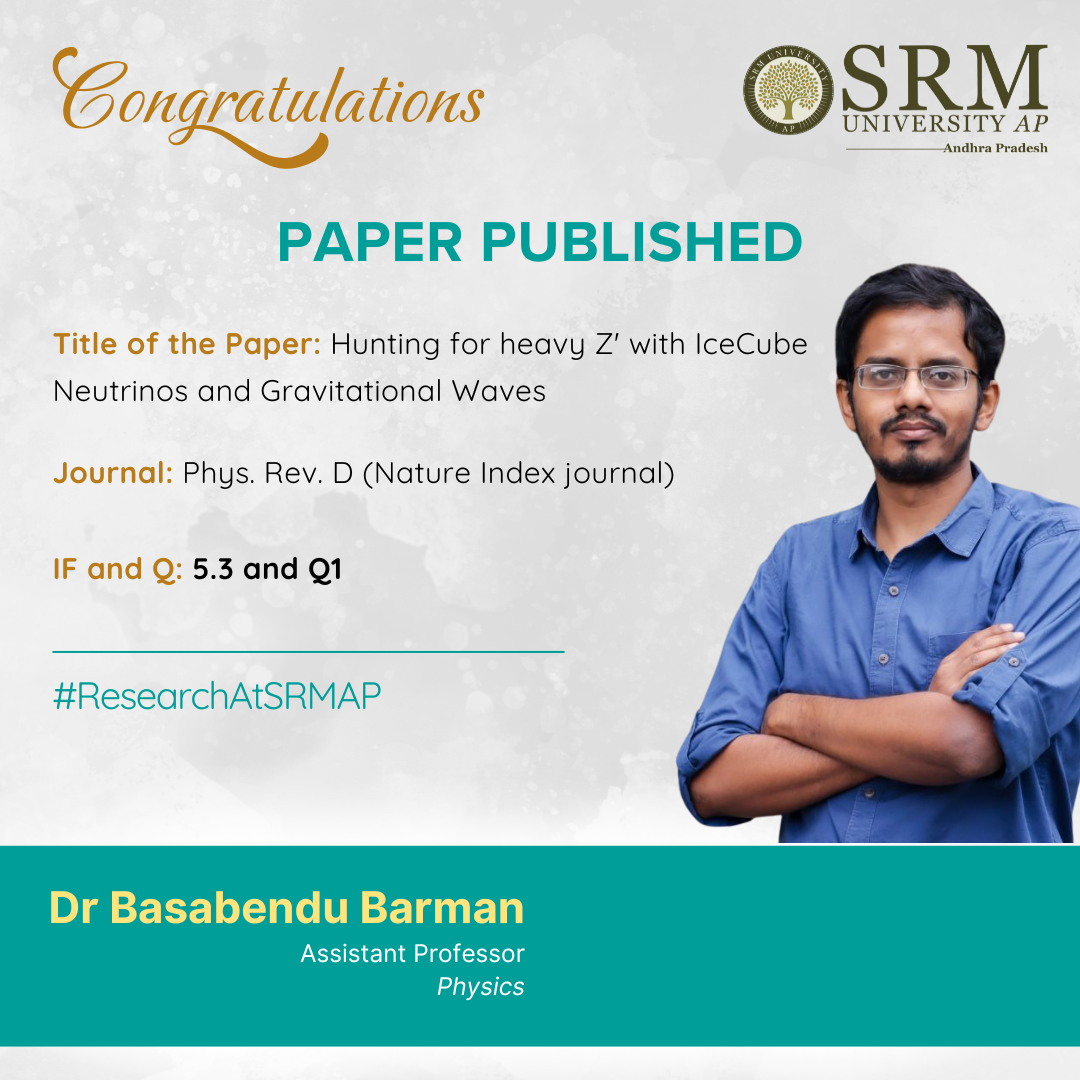 This research article, “Hunting for heavy Z ′ with IceCube neutrinos and gravitational waves,” by Assistant Professor Dr Basabendu Barma, explores the links between dark matter, the imbalance of matter and antimatter in the universe, and how these phenomena might be detected through various methods.
This research article, “Hunting for heavy Z ′ with IceCube neutrinos and gravitational waves,” by Assistant Professor Dr Basabendu Barma, explores the links between dark matter, the imbalance of matter and antimatter in the universe, and how these phenomena might be detected through various methods.
Abstract:
In the minimal gauged B−L extension of the Standard Model, we demonstrate that PeV-scale dark matter (DM) and the baryon asymmetry of the Universe (BAU) can be simultaneously explained through the three right-handed neutrinos (RHNs) present in the theory. The DM candidate undergoes rare decay into light neutrinos, providing an explanation for the observed IceCube events, while the other two RHNs generate the BAU via leptogenesis. The breaking of gauge symmetry gives rise to detectable gravitational waves (GWs) from decaying cosmic strings (CS), making this framework testable at several future GW detectors—despite being beyond the reach of conventional collider experiments due to the extremely weak gauge coupling. The symmetry-breaking scale establishes a connection between particle masses, couplings, and the GW spectrum, offering a unified and predictive scenario.
From the Layman’s Perspective:
We know there are four fundamental forces in nature: strong, weak, electromagnetic, and gravitational. But what if there’s a hidden, fifth force we haven’t discovered yet? The Standard Model of particle physics, which organizes all known particles, doesn’t include this fifth force (and doesn’t include gravity either, unfortunately). So, how can we theoretically create a particle physics model for this possible fifth force? That’s what we explore in this paper.Interestingly, there are already experiments (for example, the Large Hadron Collider or LHC at CERN, Geneva) searching for signs of fifth forces. If this force exists, our model could be tested by these experiments. But there’s more! We also wanted to tackle a big mystery in cosmology: dark matter. Dark matter makes up about 24% of the universe, but we’ve never directly detected it because it doesn’t reflect light—it’s “dark.” However, there are smart ways to try to find it. In this paper, we propose how the same dark matter might interact with the visible universe through this fifth force and thereby leave their footrpints at IceCube experiment that looks for high energy neutrinos or at experiments that search for “spcaetime ripples” called the gravitational waves.
Practical Implementation & Social Impact:
This work primarily contributes to the realm of pure intellectual pursuit. Science speaks the language of data, and data is born from experiments. The validation of any well-constructed theory ultimately depends on experimental evidence. For this reason, it is essential for society to cultivate a culture that values fundamental scientific discussion and increases funding for basic research.
Collaborations:
This work has been done in collaboration with Arindam Das (Hokkaido U.), Suruj Jyoti Das (IBS, Daejeon, CTPU), Marco Merchand (Royal Inst. Tech., Stockholm and Stockholm U., OKC).
Future Plans:
A closer look into early universe dynamics by performing more involved simulations.
Connection between particle physics models and early Universe cosmology. Complementary searches from different experiments in unraveling new physics beyond the Standard Model. Searching new physics at energy and intensity frontier

